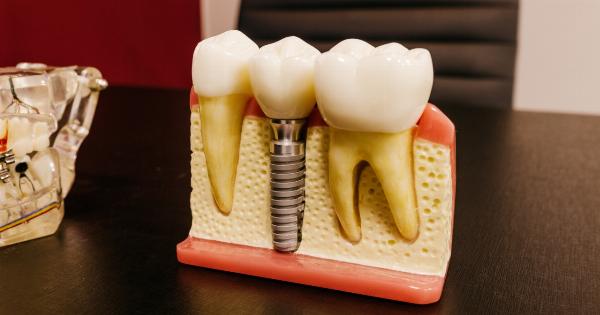Do you suffer from bad breath or experience frequent bouts of tonsillitis? You may be experiencing tonsilloliths, also known as tonsil stones.
In this article, we will explore the causes, symptoms, and treatment options for tonsilloliths and bad breath.
What are Tonsilloliths?
Tonsilloliths are small, calcified deposits that form in the crevices of the tonsils. They typically range in size from a grain of rice to a small pea and are composed of bacteria, dead cells, and food particles that have hardened over time.
Tonsilloliths are often visible as white or yellowish lumps on the surface of the tonsils and can cause bad breath, a sore throat, and difficulty swallowing.
What Causes Tonsilloliths?
Tonsilloliths can form as a result of a variety of factors, including poor oral hygiene, chronic tonsillitis or other throat infections, allergies, or blockages in the tonsil crevices.
Individuals who have larger tonsil crypts or suffer from chronic sinusitis may be more prone to developing tonsilloliths. Additionally, consuming diets high in dairy, especially milk, cheese or yogurt may raise the likelihood of developing tonsilloliths as these foods are known to be high in calcium.
Symptoms of Tonsilloliths
Many people with tonsilloliths are unaware they have them until they experience symptoms such as bad breath or a sore throat. Other common symptoms of tonsilloliths include:.
- Coughing fits (particularly when trying to eliminate the tonsilloliths)
- Difficulty swallowing or pain when swallowing
- An unpleasant taste or metallic smell in the mouth
- Ear pain
- Swollen tonsils or white spots on the tonsils
- Breathing difficulties (in severe cases)
Treatment Options for Tonsilloliths
If you suspect you have tonsil stones, it’s important to see a medical professional. Your doctor may recommend a variety of treatment options depending on your individual situation:.
Oral Hygiene
One of the most effective treatments for tonsilloliths is maintaining good oral hygiene.
This includes brushing and flossing your teeth twice a day, using a mouthwash to kill the bacteria that cause bad breath, and staying hydrated by drinking plenty of water throughout the day. For a more targeted approach to cleaning tonsilloliths, you could use a cotton swab or a water pick tool to gently dislodge them.
Salt Water Gargle
A salt water gargle can help to cleanse the tonsils and alleviate symptoms of tonsilloliths. Simply fill a glass with warm water and add half a teaspoon of salt; stir well until completely dissolved.
Gargle with the salt water for 30 seconds, then spit out and repeat several times a day until symptoms improve.
Laser Tonsil Cryptolysis
If your tonsilloliths are causing severe symptoms and are not responding to more conservative treatment methods, your doctor may recommend a minimally invasive procedure called laser tonsil cryptolysis.
During this procedure, a laser is used to vaporize the crypts and remove the tonsil stones. Recovery time is usually minimal, and most patients can return to normal activities the same day.
Tonsillectomy
In severe cases, a doctor may recommend removing the tonsils altogether.
Tonsillectomies have long been used to treat chronic tonsillitis, and they may also be necessary in cases where tonsilloliths are causing significant discomfort and are not responsive to other treatments. This is generally considered a last resort treatment for tonsil stones as there is greater risk of complications related to the surgery and recovery can take several weeks.
Preventing Tonsilloliths
While there is no guaranteed way to prevent tonsilloliths from forming, there are steps you can take to minimize your risk:.
- Practice good oral hygiene by brushing and flossing teeth regularly and using a mouthwash to kill bacteria
- Avoid dairy-rich diets as these can increase the likelihood of developing tonsilloliths
- Stay hydrated by drinking plenty of water throughout the day
- Treat allergies or frequent sinus infections promptly
- Avoid using tobacco products as these can dry out the mouth and lead to tonsilloliths
The Bottom Line
If you are experiencing bad breath or other symptoms associated with tonsilloliths, it’s important to seek medical attention.
With proper treatment, most people are able to successfully manage their symptoms and prevent tonsilloliths from recurring. By maintaining good oral hygiene, avoiding dairy-rich diets and treating infections and allergies promptly, you can help to minimize your risk of developing tonsilloliths.



























